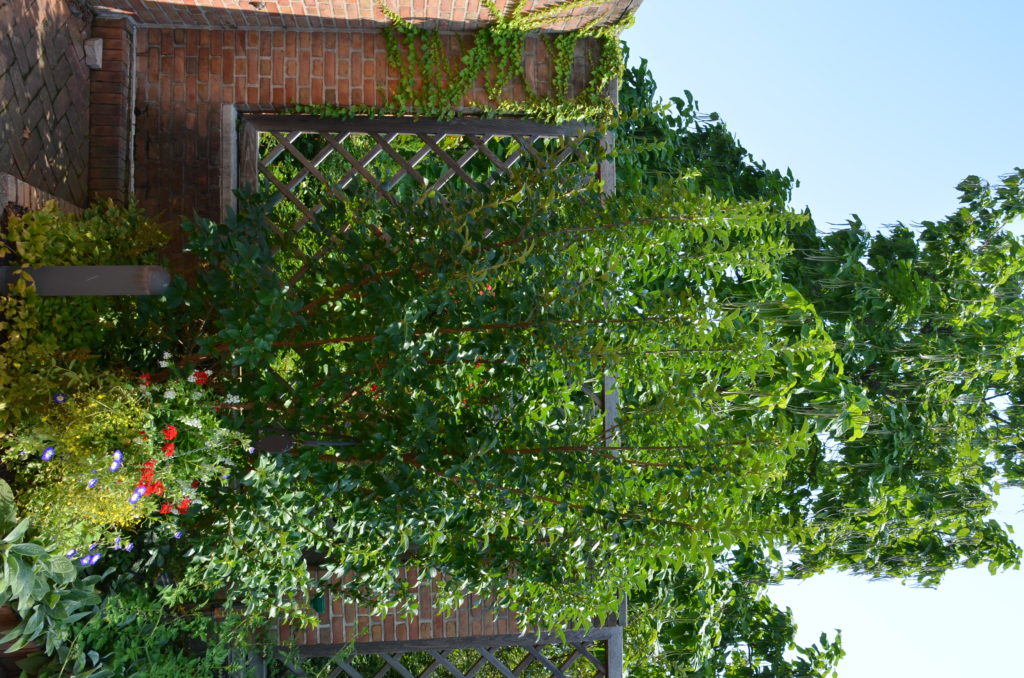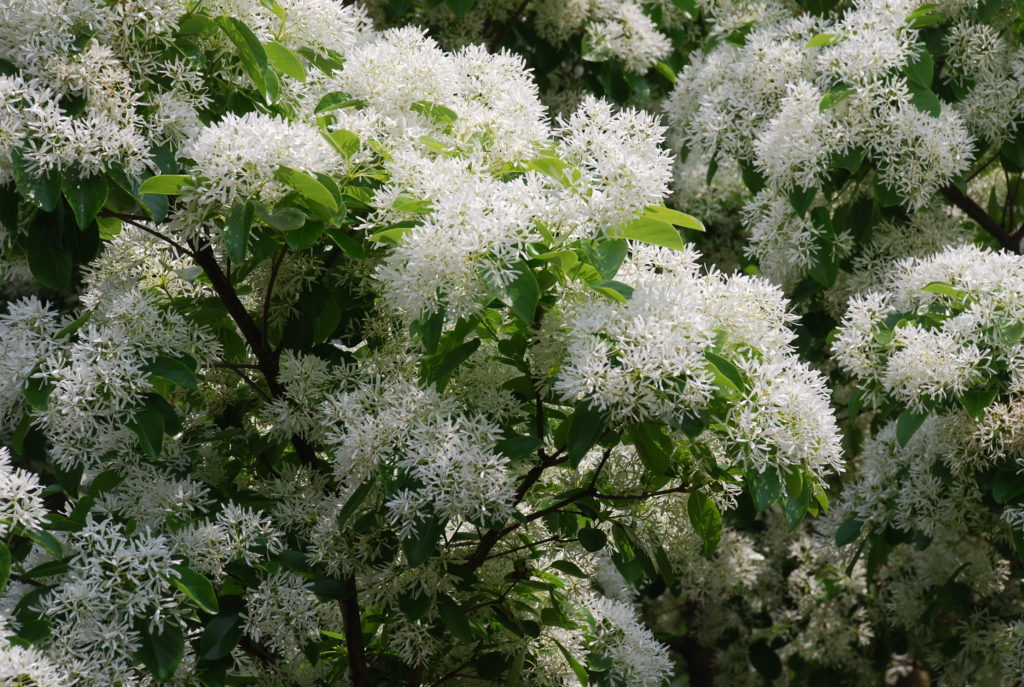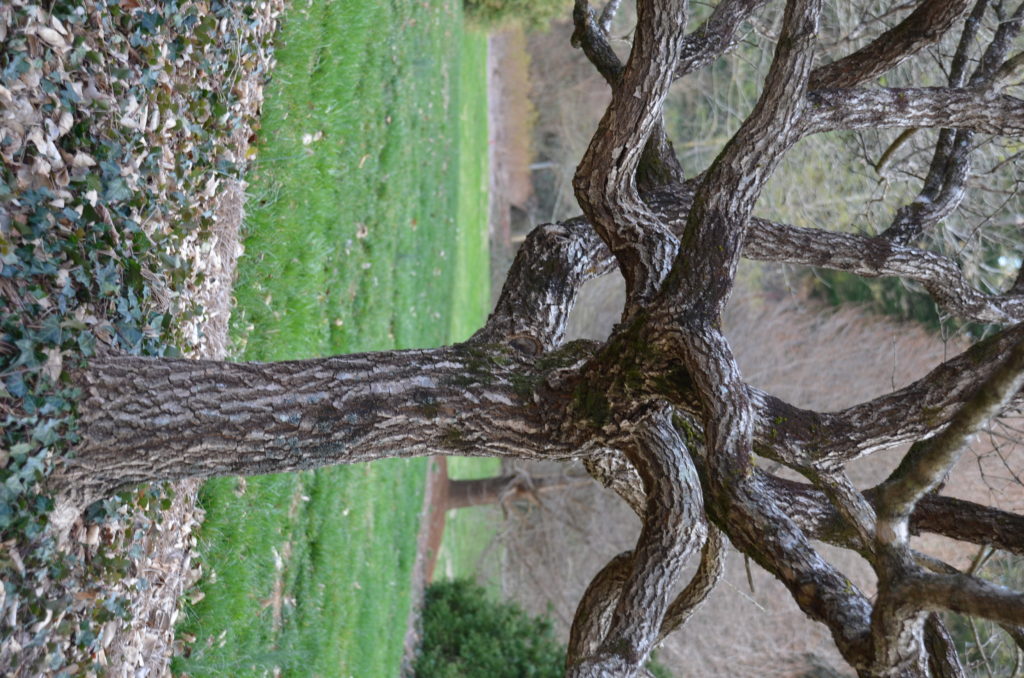Chinese fringetree (Chionanthus retusus) is native to China, Korea and Japan (USDA hardiness zones 5-9). As with the native U.S. species (C. virginicus), this plant is noted for its fragrant white flowers. Gardeners first fall in love with this large, multi-stemmed, deciduous large multi-branched shrub. Some nurseries are also offering the Chinese form as a promising 20-30 feet tall, low-branched, (single or multi-trunked), lawn tree.

Fringetrees are primarily dioecious (separate male and female plants), but some perfect flowers do occur. Male flowers are slightly larger and showier. Female flowers (if fertilized) give way to clusters of olive-like fruits (each to 1/2” long) which ripen to a dark bluish black in late summer/fall and are a good food source for birds and wildlife.
Lustrous, leathery leaves are ovate to elliptic and 4” long. Leaves on young plants have serrate margins. Leaves are bright green above and downy whitish green beneath. Leaves turn yellow in fall (reportedly more attractive in northern areas). Exfoliating gray-brown bark is attractive in winter.
Chinese fringetrees require little special attention. Best flowering happens with 4-5 hours of sun. Site the tree in average, medium moisture, mildly acidic, well-drained soil. Young 1–2-year-old trees should be irrigated during dry spells lasting 10 days of more. Pruning is rarely needed. Leaves are tolerant of air pollution and adapts well to urban settings.
No serious disease and insect problems trouble Chinese fringetree. Occasionally, damage from mites, scales and borers have been reported, usually observed during stressful hot dry summers. Leaf spots, canker and powdery mildew diseases may occur as signs of over-irrigation or wet summer weather.
Fringetrees, both the U.S. native and Chinese forms, are rarely sold at local garden centers, but are available in limited numbers at online nurseries. They’re spectacular in full bloom and early evening fragrance is so worth it.

Noted cultivar – ‘Tokyo Tower’ is a narrow upright branched small tree. It grows 12 – 15 feet tall and 4 – 6 feet wide. In the spring (early May), its narrow stature standouts abundant clusters of billowy white flowers followed by blue berry (drupe) fruits ripening after mid-August; dark green foliage turns yellow in autumn. Fall color is variable from one year to the next.


 Posted in
Posted in 
